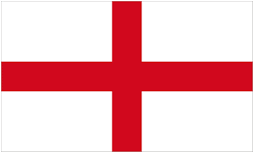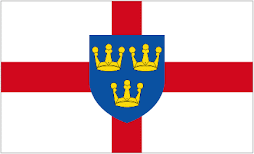 HYPNet - the HIV in Young People Network - describes itself as "a multidisciplinary group of health professionals and voluntary sector representatives" working for people between the ages of 14-24 who are unfortunate enough to be living with HIV.
HYPNet - the HIV in Young People Network - describes itself as "a multidisciplinary group of health professionals and voluntary sector representatives" working for people between the ages of 14-24 who are unfortunate enough to be living with HIV.They've just released draft guidelines on the management of sexual and reproductive health for adolescents living with HIV 2010.
The first thing that worried me on the guidance came as early as Section 3, Definitions. In this draft document, which dealt with "possibility of having pleasurable and safe sexual experiences" for adolescents, the term "adolescence" itself is defined worryingly:
The term adolescent will be used throughout these guidelines to denote young people aged 10-24 years old, which covers the age from the onset of menarche in the UK to the upper limit of the definition of young adult...I had to read the lower limit of that definition again: 10. This is no faux alarm - the Telegraph's Aislinn Laing reported recently that "Between 2000 and 2007, a total of 15 ten year olds and 39 aged 11 fell pregnant in England and Wales". HYPnet's somewhat abusive take on sexual health care is outlined in bold letters at point 8.1:
PHCP [paediatric healthcare professionals] need to take responsibility for seeing that Sexual Health needs, if not brought up by the adolescent, are raised in consultations, starting well before sexual maturity is reached.Yet, although the paper states twice that in England and Wales sexual activity involving under-13's is illegal and indeed rape (under common law consent is meaningless under this age), the waters are muddied by a statement in point 6.3, which concerns the Sexual Offences Act 2003, that "this document does not advocate mandatory reporting to police or social services of every sexually active under 18 if there is no cause for concern"; the cut-off point of 13 has been dropped.
A pattern starts to emerge at point 8.3, where we read under the heading of Sexual Health Education that "Psychosexual issues may arise from cultural and religious beliefs around...female circumcision". Again, there is no comment, even to the effect that "female circumcision", more properly known as female genital mutilation, is a vicious assault on a young girl which, even if it is carried out abroad, is still an offence as if it had been done in the UK under the terms of the Female Genital Mutilation Act 2003. But the foul practice is listed as if it had no more significance than being one cultural phenomenon among many.
 In 2006 Anthony Ozimic, Political Secretary of the Society for the Protection of Unborn Children (SPUC) identified that the term "sexual and reproductive health" cannot be taken within any legal framework to include abortion.
In 2006 Anthony Ozimic, Political Secretary of the Society for the Protection of Unborn Children (SPUC) identified that the term "sexual and reproductive health" cannot be taken within any legal framework to include abortion.The news has travelled slowly: point 9.2 in this document about sexual and reproductive health is a "checklist for sexual history discussion", and the ninth crib-note states: "Managing an unplanned pregnancy. Options of continuing with pregnancy, adoption or termination of pregnancy; methods of termination." The thought of an adolescent girl, already emotionally fragile through the stigma many people living with HIV are still exposed to, being put at risk of post-abortion trauma is as heartbreaking as is the omission of the risk of PAT from the crib-notes. Similarly, the advice under 16.4, emergency
 contraception, advises not only the morning-after pill Levonelle, which is basically a form of chemical abortion, but that double the dose (3000 micrograms instead of 1500) be given, and that the dose be documented because Levonelle is not licensed to be given in this quantity. There's no mention in the paper of the patient being informed of this in the event of the drug being given in a sexual health clinic as opposed to a pharmacy.
contraception, advises not only the morning-after pill Levonelle, which is basically a form of chemical abortion, but that double the dose (3000 micrograms instead of 1500) be given, and that the dose be documented because Levonelle is not licensed to be given in this quantity. There's no mention in the paper of the patient being informed of this in the event of the drug being given in a sexual health clinic as opposed to a pharmacy.Ironically, the one area (16.5) where the paper hits the nail right on the head is the one that workers whose fields intersect that of sexual health are asked to keep quiet about:
Condoms are estimated to prevent HIV transmission in only 13% (4-40) of cases (Davis and Weller 1999) and should not therefore be relied on alone for contraception.I recommend that you follow the link to the Davis and Weller article, which seems to contextualise a later study in the New England Journal of Medicine that found a higher rate of protection (22% - albeit against HPV transmission) - when condoms were used 100% of the time.
Draft Guidance on the Management of Sexual and Reproductive Health for Adolescents Living with HIV 2010 is a case-in-point of how wilfully incomplete advice drawn up along
 ideological lines can put real, vulnerable, people right in the firing line of the slings and arrows of outrageous fortune. The nhsnetworks lis
ideological lines can put real, vulnerable, people right in the firing line of the slings and arrows of outrageous fortune. The nhsnetworks lis ting for HYPNet shows that membership is open to all, and current membership is 2 (one of whom is paediatric HIV expert Dr Simon Portsmouth, right) - who have managed to get this paper distributed throughout the world by the otherwise well-regarded aidsmap e-bulletin.
ting for HYPNet shows that membership is open to all, and current membership is 2 (one of whom is paediatric HIV expert Dr Simon Portsmouth, right) - who have managed to get this paper distributed throughout the world by the otherwise well-regarded aidsmap e-bulletin.The trojan horse was an article called Numerous unplanned pregnancies in vertically-in
 fected teenagers (the term indicating that the virus was transmitted during pregnancy or at birth), which did not appear to consider that there are numerous unplanned pregnancies in teenagers generally - Britain has the highest rate of teenage pregnancies in Europe - precisely because of abusive sex education strategies of the sort championed by HYPNet.
fected teenagers (the term indicating that the virus was transmitted during pregnancy or at birth), which did not appear to consider that there are numerous unplanned pregnancies in teenagers generally - Britain has the highest rate of teenage pregnancies in Europe - precisely because of abusive sex education strategies of the sort championed by HYPNet.If you are concerned or disturbed about any of the issues in this post, please respectfully and with sensitivity towards the difficulties faced by young people with HIV email Dr Simon Portsmouth.











Hi! I'm behind you.
ReplyDeleteGood luck!
Thanks Yui - much appreciated!
ReplyDeletePowerful post. Britain needs more people like you; I'm proud to 'know' you.
ReplyDeleteLinda, thank you so much; your comment really means a lot to me.
ReplyDeleteSo sexually active young people with HIV should not be given advice about sexual health? What are you obstructing here?
ReplyDelete